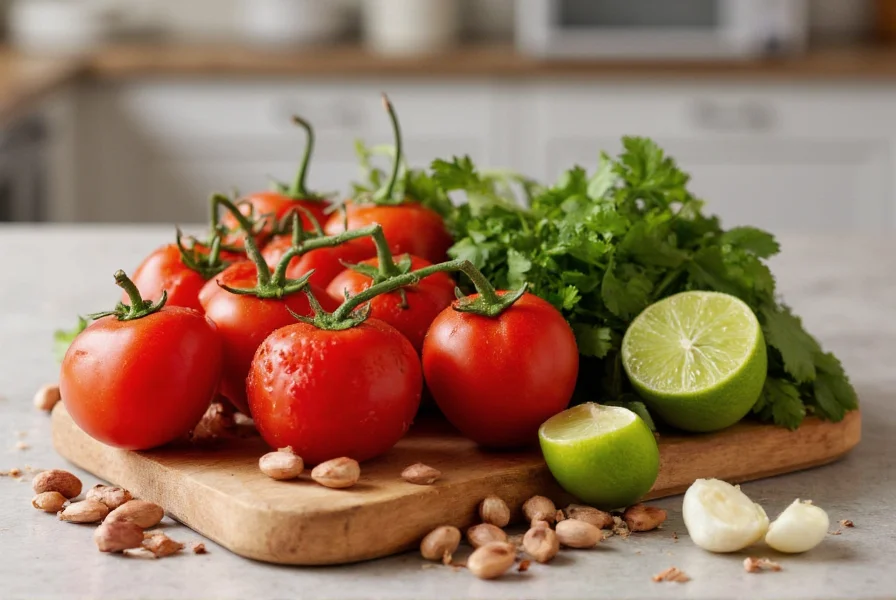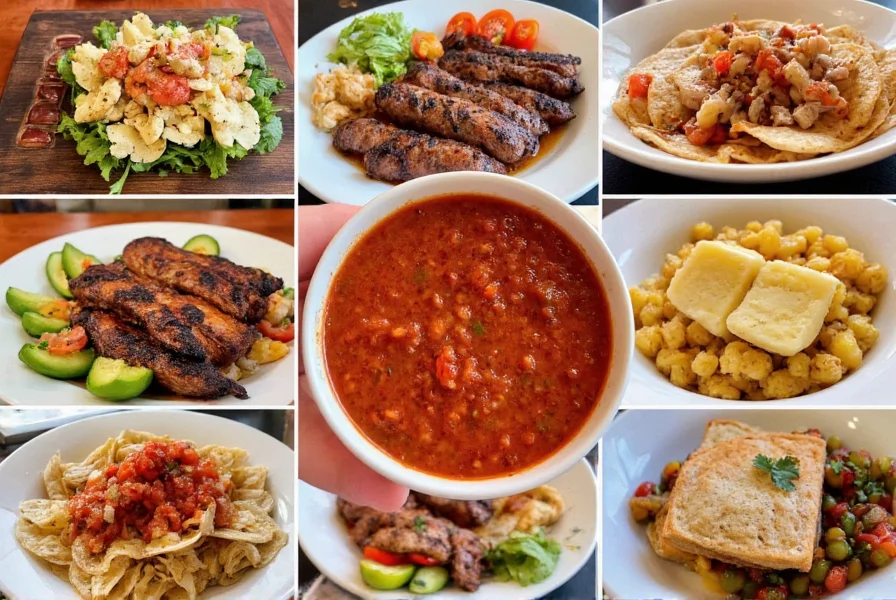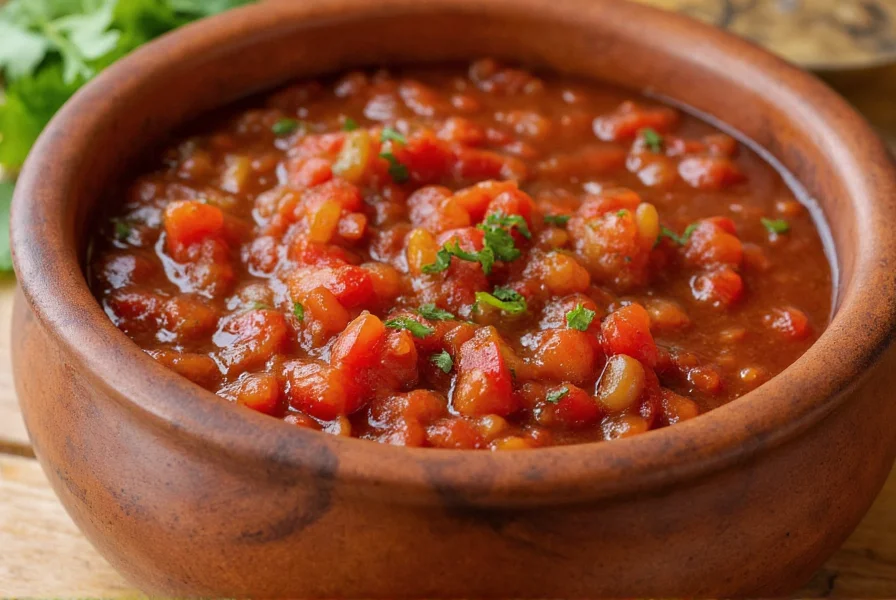Creating exceptional ghost pepper salsa requires understanding both the science of capsaicin and the art of flavor balancing. While many assume ghost pepper salsa exists solely to test pain tolerance, experienced chefs and food scientists recognize its potential for nuanced culinary applications when prepared thoughtfully.
The Science Behind Ghost Pepper Heat
Ghost peppers (Bhut Jolokia) earned recognition as the world's hottest chili pepper in 2007, verified by Guinness World Records. Their extraordinary heat comes from concentrated capsaicinoids, particularly capsaicin and dihydrocapsaicin. Understanding these compounds explains why proper preparation techniques significantly impact the final salsa's heat profile.
| Pepper Variety | Scoville Heat Units | Heat Comparison |
|---|---|---|
| Ghost Pepper | 855,000–1,041,427 SHU | 200–400x hotter than jalapeño |
| Habanero | 100,000–350,000 SHU | 12–40x hotter than jalapeño |
| Jalapeño | 2,500–8,000 SHU | Baseline for comparison |
Safety First: Handling Ghost Peppers Properly
Before attempting a ghost pepper salsa recipe, implement these critical safety measures:
- Always wear nitrile gloves when handling ghost peppers—latex won't provide sufficient protection
- Work in a well-ventilated area to avoid inhaling capsaicin particles
- Avoid touching your face, especially eyes, during preparation
- Use dedicated cutting boards and utensils that won't be used for other foods afterward
- Have dairy products like milk or yogurt nearby to counteract accidental exposure
Many home cooks underestimate how easily capsaicin transfers to surfaces. Professional chefs recommend treating ghost peppers with the same caution as handling laboratory chemicals. The compound remains active even after cooking, making proper handling non-negotiable for safe ghost pepper salsa preparation.
Ghost Pepper Salsa Recipe Fundamentals
The foundation of exceptional ghost pepper salsa balances heat with complementary flavors. While many ghost pepper salsa recipes focus exclusively on maximum heat, the most enjoyable versions incorporate these elements:

- Roasted base ingredients: Charred tomatoes, tomatillos, or mangoes create complex sweetness that counteracts heat
- Acid component: Fresh lime juice brightens flavors and helps extract capsaicin more evenly
- Flavor enhancers: Roasted garlic, cumin, and coriander add depth without competing with the pepper
- Gradual heat integration: Start with minimal ghost pepper and adjust incrementally
For first-time makers of ghost pepper salsa, begin with just 1/4 of a ghost pepper for a standard batch. Remember that heat intensifies as the salsa sits—what seems mild immediately after preparation will become significantly hotter within 24 hours as capsaicin distributes throughout the mixture.
Advanced Flavor Balancing Techniques
Professional chefs employ several sophisticated techniques when crafting premium ghost pepper salsa:
- Selective pepper preparation: Removing seeds and membranes reduces heat while preserving flavor, as capsaicin concentrates in these areas
- Controlled fermentation: Brief fermentation (12–24 hours) develops complex flavor compounds while slightly reducing perceived heat
- Layered heat approach: Combining ghost peppers with complementary chilies like habaneros creates multidimensional heat profiles
- Temperature management: Processing ingredients at specific temperatures optimizes flavor extraction without excessive heat release
Understanding how different preparation methods affect capsaicin solubility proves crucial. Capsaicin dissolves better in fats and alcohols than in water, which explains why dairy products effectively counteract heat. This scientific principle informs ingredient selection for balanced ghost pepper salsa that delivers complex flavor rather than pure pain.
Perfect Pairings for Ghost Pepper Salsa
Ghost pepper salsa shines when paired thoughtfully with complementary foods. Consider these pairing strategies:

- Rich proteins: Grilled steak, pork shoulder, or dark meat poultry provide fatty bases that counteract heat
- Cheese pairings: Aged cheeses like Manchego or sharp cheddar create cooling contrast
- Starchy foundations: Cornbread, sweet potatoes, or plantains absorb heat while providing sweetness
- Unexpected applications: Small amounts enhance chocolate desserts or fruit salads through contrast
When serving ghost pepper salsa, always provide cooling accompaniments like sour cream, avocado, or cucumber slices. These elements aren't just afterthoughts—they're essential components of the complete flavor experience. The most sophisticated ghost pepper salsa pairings create a journey from initial heat to cooling resolution, engaging multiple taste receptors sequentially.
Storage and Shelf Life Considerations
Proper storage significantly impacts both safety and flavor development of ghost pepper salsa. Unlike milder salsas, ghost pepper varieties require special attention due to their intense capsaicin concentration.
- Store in glass containers rather than plastic, which can absorb capsaicin
- Refrigerate immediately after preparation—never leave at room temperature for extended periods
- Consume within 7–10 days for optimal flavor and safety
- Label containers clearly with preparation date and heat level
- Never freeze ghost pepper salsa, as this concentrates capsaicin upon thawing
Remember that ghost pepper salsa continues to develop heat as it sits. What seems perfectly balanced on day one may become overwhelmingly hot by day five. Professional kitchens often prepare ghost pepper components separately and combine them just before service to maintain precise heat control.
Common Ghost Pepper Salsa Mistakes to Avoid
Even experienced cooks make critical errors when preparing ghost pepper salsa. Avoid these common pitfalls:
- Insufficient protective gear: Assuming regular kitchen gloves provide adequate protection
- Overestimating tolerance: Adding too much pepper initially without gradual adjustment
- Improper cleaning: Failing to thoroughly clean surfaces and utensils after preparation
- Misunderstanding heat development: Not accounting for increased spiciness during storage
- Neglecting flavor balance: Focusing exclusively on heat rather than creating complex flavor profiles
One particularly dangerous mistake involves using blenders or food processors without proper containment. The high-speed processing aerosolizes capsaicin, creating an invisible mist that can cause severe respiratory irritation. Always process ghost peppers in well-ventilated areas with protective eyewear, and consider using manual preparation methods for maximum safety.
Frequently Asked Questions
How much ghost pepper should I use in salsa for moderate heat?
For moderate heat in a standard batch (approximately 2 cups), start with 1/8 to 1/4 of a ghost pepper. Remember that heat intensifies as the salsa sits, so it's better to begin conservatively and add more after 24 hours if needed. Always remove seeds and membranes, where most capsaicin concentrates, to control heat levels while preserving flavor.
What should I do if ghost pepper salsa gets on my skin?
Immediately wash the affected area with soap and cold water—avoid hot water as it opens pores and increases absorption. Apply milk, yogurt, or vegetable oil to help dissolve the capsaicin. For severe exposure, use a mixture of baking soda and water to neutralize the compound. Never rub the affected area, as this spreads the capsaicin. If exposure affects eyes or sensitive areas, seek medical attention immediately.
Can I reduce the heat of ghost pepper salsa after it's made?
Yes, but with limitations. The most effective method is adding dairy products like sour cream or yogurt, which contain casein that binds to capsaicin. Acidic components like additional lime juice or vinegar can also help balance heat perception. For significant heat reduction, incorporate more base ingredients like roasted tomatoes or mango. Note that dilution works better than attempting to remove capsaicin, which is nearly impossible once distributed throughout the salsa.
How does ghost pepper salsa differ from regular hot salsa?
Ghost pepper salsa differs fundamentally in heat profile and flavor complexity. While regular hot salsas typically use jalapeños or habaneros (2,500–350,000 SHU), ghost peppers operate at 855,000–1,041,427 SHU—hundreds of times hotter. This extreme heat requires different preparation techniques, safety precautions, and flavor balancing. Ghost pepper salsa should offer nuanced fruitiness beneath the heat, whereas many commercial hot salsas rely primarily on vinegar-based heat without complex flavor development.











 浙公网安备
33010002000092号
浙公网安备
33010002000092号 浙B2-20120091-4
浙B2-20120091-4